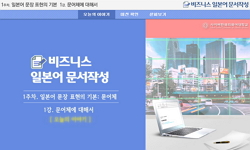조선과 일본 사이의 교류 경로는 시기에 따라 다양했다. 조선 정부는 건국 초기부터 일본의 중앙정부뿐만 아니라 지방의 여러 세력까지도 교류의 대상에 포함시켜서 다원적인 경로를 유지...
http://chineseinput.net/에서 pinyin(병음)방식으로 중국어를 변환할 수 있습니다.
변환된 중국어를 복사하여 사용하시면 됩니다.
- 中文 을 입력하시려면 zhongwen을 입력하시고 space를누르시면됩니다.
- 北京 을 입력하시려면 beijing을 입력하시고 space를 누르시면 됩니다.

교류의 경로와 풍경 : 일본 고토렛토[五島列島]를 중심으로 = Networks and Landscape in Korean-Japanese Relations during the Chos?n Period : The Got? Islands in Japan
한글로보기https://www.riss.kr/link?id=A82644478
- 저자
- 발행기관
- 학술지명
- 권호사항
-
발행연도
2010
-
작성언어
Korean
-
주제어
조선 ; 일본 ; 네덜란드 ; 표류 ; 표류민 ; 고토렛토(五島列島) ; 고토(五島) ; 하멜 ; Chos?n ; Japan ; Dutch ; castaways ; drifters ; Got? archipelago ; Got? islands ; Hendrick Hamel
-
KDC
911
-
등재정보
KCI등재
-
자료형태
학술저널
-
수록면
67-107(41쪽)
- DOI식별코드
- 제공처
-
0
상세조회 -
0
다운로드
부가정보
국문 초록 (Abstract)
조선과 일본 사이의 교류 경로는 시기에 따라 다양했다. 조선 정부는 건국 초기부터 일본의 중앙정부뿐만 아니라 지방의 여러 세력까지도 교류의 대상에 포함시켜서 다원적인 경로를 유지하였다. 그 뒤 임진왜란 후부터는 쓰시마가 두 나라의 중간에서 교류 업무를 전담하는 형태로 바뀌었다. 메이지유신 이후가 되면 쓰시마마저도 그 경로에서 배제되어 두 나라 사이에는 일원적인 경로만 남게 되었고 그것이 지금까지도 이어지고 있다.
바다를 사이에 두고 있는 조선과 일본의 교류는 해상의 조건 속에서 전개되고 있었다. 바다는 늘 유동적이어서 돌풍과 파도에 의해 배가 전복되는 일도 종종 있었다. 드넓은 바다를 국가권력이 철저하게 통제하기도 쉽지 않았다. 통신사 · 역관사 같은 사신의 왕래나 무역선의 도항은 국가권력의 직접적인 통제 속에서 이루어졌지만, 표류나 밀항 같은 경우는 국가의 통제 밖에서 이루어졌다.
일본의 서북쪽 한반도와 가까운 곳에 위치한 고토렛토[五島列島]도 조선시대 한일 교류의 한 부분을 담당하였다. 고토 지역은 쓰시마처럼 공식적인 교류의 통로는 아니었지만 표류에 의해 간접적으로 두 나라 사람들이 접촉할 수 있는 길이 열려 있었다. 고토 지역에 표착한 조선인들도, 고토 지역으로 밀항한 하멜 일행도 이 길을 이용하였다. 이러한 길이 반복적으로 열리게 되면 그 길을 통해 사람과 물건과 정보와 문화가 이동하는 법이다.
다국어 초록 (Multilingual Abstract)
The networks for interaction between Chos?n and Japan varied over time. The Chos?n government interacted not only with the central government in Japan but also with numerous local elites from its founding in 1392. Later, after the Imjin War of 159...
The networks for interaction between Chos?n and Japan varied over time. The Chos?n government interacted not only with the central government in Japan but also with numerous local elites from its founding in 1392. Later, after the Imjin War of 1592-1598, Tsushima came to manage the relations between the two countries. And from the early Meiji period, the linkage between Tsushima and Chos?n was closed, and remains so today.
Korean-Japanese interaction across the sea was conducted through maritime institutions. The sea was fluid, and ships frequently capsized due to strong winds and rough seas. It was not easy for state power to completely control the open seas. The travel of state envoys and interpreters and the sail of trade ships occurred under the state’s direct control, but instances of castaways and stowaways occurred beyond state control.
The Got? archipelago, which was in westernmost Japan and near to the Korean peninsula, managed one aspect of Korean-Japanese relations during the Chos?n period. A space where people from both countries could interact through castaway incidents was indirectly opened in the Got? area, which unlike Tsushima was not on the route used for official relations. Koreans whose ships sailed off course and landed in the Got? islands, and Hendrick Hamel and his Dutch compatriots whose ship stopped at one of the Got? islands used this route. If such a route was repeatedly opened, then people, physical objects, information, and culture also moved.
목차 (Table of Contents)
- [국문초록]
- 1. 머리말 : 고토렛토의 위치와 해양 조건
- 2. 표류와 고토렛토 - 한반도 바닷길
- 3. 밀항과 여수반도 - 고토렛토 바닷길
- 4. 맺음말 : 교류 경로의 관리와 이용
- [국문초록]
- 1. 머리말 : 고토렛토의 위치와 해양 조건
- 2. 표류와 고토렛토 - 한반도 바닷길
- 3. 밀항과 여수반도 - 고토렛토 바닷길
- 4. 맺음말 : 교류 경로의 관리와 이용
- 참고문헌
동일학술지(권/호) 다른 논문
-
- 목포대학교 도서문화연구소
- 왕련무 ( Lian Mao Wang )
- 2010
- KCI등재
-
- 목포대학교 도서문화연구소
- 진려화 ( Chen Li Hua )
- 2010
- KCI등재
-
13세기말 고려 대외무역선의 활동과 元代 ‘關稅’의 문제
- 목포대학교 도서문화연구소
- 이강한(Lee Kanghahn)
- 2010
- KCI등재
-
- 목포대학교 도서문화연구소
- 원용태(Won Yongtae)
- 2010
- KCI등재




 ScienceON
ScienceON DBpia
DBpia






